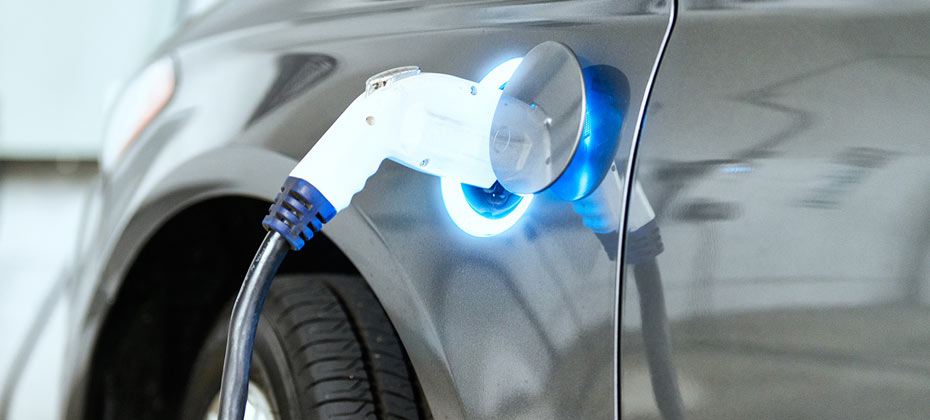Tag: electric vehicles

In Experian’s Automotive Market Trends Review: Q2 2021, we looked at the data to better understand EV and internal combustion engine registration trends.

The Q4 2020 State of the Automotive Finance Market report zooms in to get a better picture of the alternative fuel marketplace.

Like every other industry, the automotive market is driven by consumer preferences and behavior. While there are a myriad of options to choose from, fuel-type seems to dominate media headlines as a hot topic of conversation among industry pundits and consumers, alike. Little surprise then that alternative fuel vehicles, which include diesels and hybrids, have maintained a steady demand over the past few years. But, there’s a specific segment that’s beginning to emerge. As we detailed in our earlier blog series, electric vehicles (EVs) are began to stand out as a prominent alternative fuel vehicle. And during Q3 2018, we saw more of the same. EVs held 1.8 percent share of total vehicle registrations. While that number may seem small, consider this. Just two years ago, in 2016, EVs comprised only 0.5 percent of registrations, growing at a much slower pace since 2014, when it was 0.4 percent. It’s worth noting that gasoline-powered cars still dominate the market, making up 92.9 percent of registered vehicles through Q3 2018. But, the demand for alternative fuel type options should not be underestimated. Alternative fuel vehicles are becoming a significant segment in today’s auto market, and the large growth in EVs are a testament to that growth. While EVs are proving to be a popular option compared to other alternative fuel types, other options remained steady. Diesel vehicles maintained 2.8 percent of the market year-over-year, while hybrid vehicles saw a slight increase since 2017, growing from 2.6 to 2.8 percent of the market. A picture of the alternative fuel buyer So, who’s investing in these alternative fuel vehicles? We see that most buyers tend to be married, single family home owners with a college education, and belong to either the Baby Boomer generation or Gen X. It’s interesting to note that EVs make up a notable percentage of registrations of alternative fuel type preferences across generational car buyers, according to Q3 registration data. Among Baby Boomers, EVs fall second to hybrids, accounting for 1.0 percent of registered alternative fuel type vehicles compared to 1.2 percent respectively. But, EVs made up the biggest share of alternative fuel type registrations among Millennials (1.1 percent) and Gen X’ers (1.2 percent). With the number of vehicle options available on the market today, EVs stand out as a segment to watch within the auto industry. There’s a greater story beyond the numbers and understanding how to leverage the data at hand can provide the industry with a greater understanding of the EV market and its potential. To learn more about the electric vehicle market and other alternative fuel type vehicles, view the full Q3 2018 Automotive Market Trends Analysis webinar.

There are four reasons why the auto industry should be enthusiastic about the electric vehicle segment’s future.

Where are electric vehicles most popular? During the first half of the year, 3.6 percent of all new registrations in California were EVs.

While electric vehicles remain a relatively niche part of the market, with only 0.9 percent of the total vehicle registrations through June 2018, consumer demand has grown quite significantly over the past few years. As I mentioned in a previous blog post, electric vehicles held just 0.5 percent in 2016. Undoubtedly, manufacturers and retailers will look to capitalize on this growing segment of the population. But, it’s not enough to just dig into the sales number. If the automotive industry really wants to position itself for success, it’s important to understand the consumers most interested in electric vehicles. This level of data can help manufacturers and retailers make the right decisions and improve the bottom line. Based on our vehicle registration data, below is detailed look into the electric vehicle consumer. Home Value Somewhat unsurprisingly, the people most likely to purchase an electric vehicle tend to own more expensive homes. Consumers with homes valued between $450,000-$749,000 made up 25 percent of electric vehicle market share. And, as home values increase, these consumers still make up a significant portion of electric vehicle market. More than 15 percent of the electric vehicle market share was made up by those with homes valued between $750,000-$999,000, and 22.5 percent of the share was made up by those with home values of more than $1 million. In fact, consumers with home values of more than $1 million are 5.9 times more likely to purchase an electric vehicle than the general population. Education Level Breaking down consumers by education level shows another distinct pattern. Individuals with a graduate degree are two times more likely to own an electric vehicle. Those with graduate degrees made up 28 percent of electric vehicle market share, compared to those with no college education, which made up just 11 percent. Consumer Lifestyle Segmentation Diving deeper into the lifestyles of individuals, we leveraged our Mosaic® USA consumer lifestyle segmentation system, which classifies every household and neighborhood in the U.S. into 71 unique types and 19 overachieving groups. Findings show American Royalty, who are described as wealthy, influential couples and families living in prestigious suburbs, led the way with a 17.8 percent share. Following them were Silver Sophisticates at 11.9 percent. Those in this category are described as mature couples and singles living an upscale lifestyle in suburban homes. Rounding out the top three were Cosmopolitan Achiever, described as affluent middle-aged and established couples and families who enjoy a dynamic lifestyle in metro areas. Their share was 10.1 percent. If manufacturers and retailers go beyond just the sales figures, a clearer picture of the electric vehicle market begins to form. They have an opportunity to understand that wealthier, more established individuals with higher levels of education and home values are much more likely to purchase electric vehicles. While these characteristics are consistent, the different segments represent a dynamic group of people who share similarities, but are still at different stages in life, leading different lifestyles and have different needs. As time wears on, the electric vehicle segment is poised for growth. If the industry wants to maximize its potential, they need to leverage data and insights to help make the right decisions and adapt to the evolving marketplace.

Electric vehicles are here to stay – and will likely gain market share as costs reduce, travel ranges increase and charging infrastructure grows.